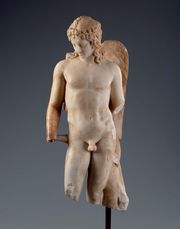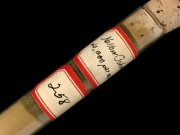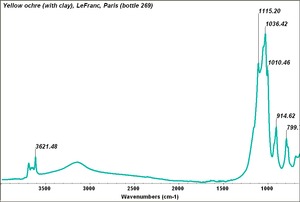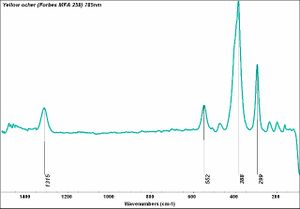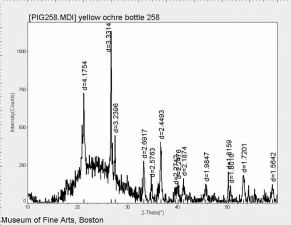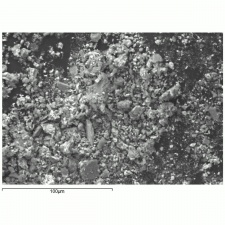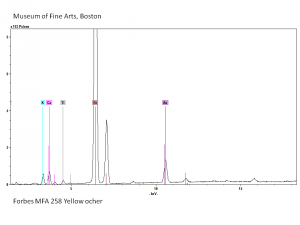Difference between revisions of "Yellow ocher"
Jump to navigation
Jump to search
| Line 1: | Line 1: | ||
| + | [[File:Eros Sculpture-CR4047-d1.jpg|thumb|Eros sculpture<br>MFA# 1979.477]] | ||
[[File:258 yellow ocher.jpg|thumb|Yellow ocher]] | [[File:258 yellow ocher.jpg|thumb|Yellow ocher]] | ||
== Description == | == Description == | ||
| Line 19: | Line 20: | ||
</gallery> | </gallery> | ||
| − | + | ==Resources and Citations== | |
| − | == | ||
* G.S.Brady, ''Materials Handbook'', McGraw-Hill Book Co., New York, 1971 Comment: p. 558 | * G.S.Brady, ''Materials Handbook'', McGraw-Hill Book Co., New York, 1971 Comment: p. 558 | ||
Revision as of 11:05, 1 September 2020
Description
A natural yellow earth mineral primarily composed of Goethite (iron hydroxide) and Clay. Yellow ochers occur naturally throughout the world and have been used as a pigment since prehistoric times. Synthetically produced yellow ocher pigment, introduced at the end of the 18th century, is sold under the name of Mars yellow.
Synonyms and Related Terms
goethite; limonite; yellow ochre; ocre jaune (Fr.); yellow earth; earth yellow; Mars yellow; gold ochre; raw sienna; French ochre; raw umber
Additional Images
Resources and Citations
- G.S.Brady, Materials Handbook, McGraw-Hill Book Co., New York, 1971 Comment: p. 558
- Reed Kay, The Painter's Guide To Studio Methods and Materials, Prentice-Hall, Inc., Englewood Cliffs, NJ, 1983
- Ralph Mayer, A Dictionary of Art Terms and Techniques, Harper and Row Publishers, New York, 1969 (also 1945 printing)
- Michael McCann, Artist Beware, Watson-Guptill Publications, New York City, 1979
- Dictionary of Building Preservation, Ward Bucher, ed., John Wiley & Sons, Inc., New York City, 1996
